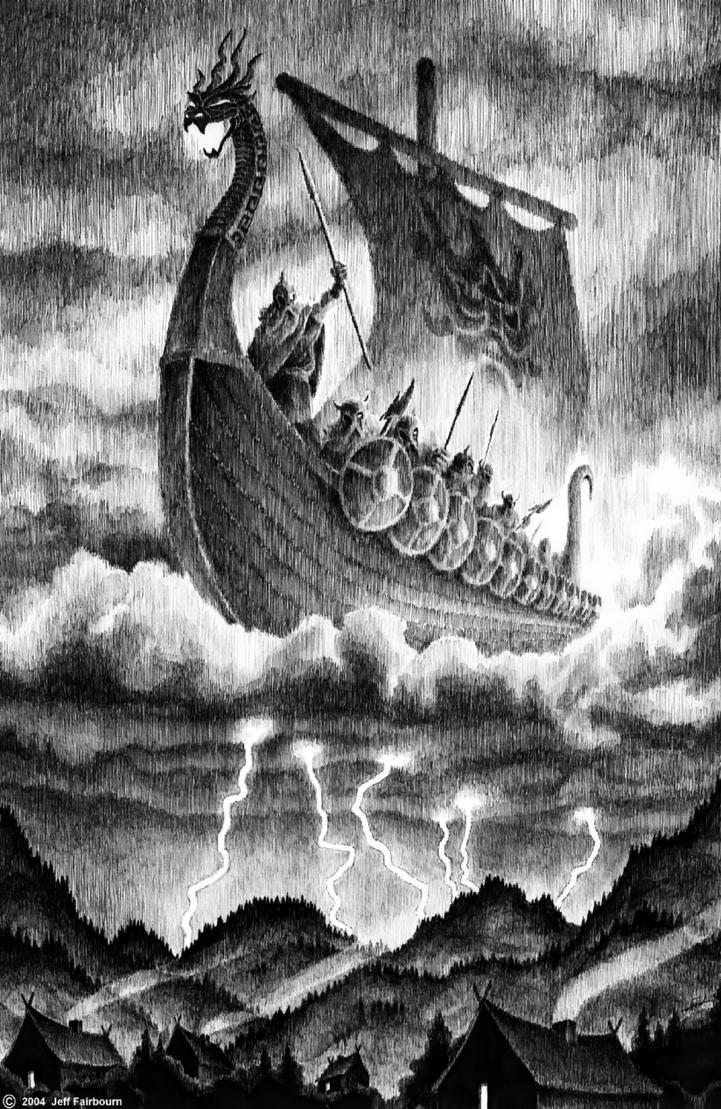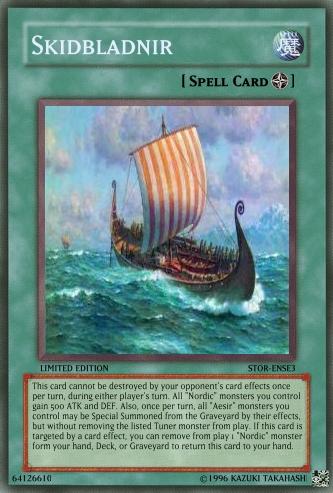Naglfar: el barco de las uñas
En la mitología nórdica,
Naglfar era una nave hecha enteramente de las uñas de los muertos.
Durante el Ragnarök, Naglfar será liberado de la tierra por una inundación y navegará hacia Vagrid, el campo de batalla, con Ymir junto a su ejército de Jotuns.
El barco llevará a las hordas del caos contra los dioses en la última
guerra en el fin del tiempo, antes que un nuevo mundo emerja del mar.
El nombre de la nave significa
"barco de uñas", pero Snorri en la Edda prosaica provee una etimología folclórica de
"transbordador de uñas", exhortando que ningún muerto fuera enterrado con las uñas sin cortar. Se le menciona en ambas Edda.
Skidbladnir: el fabuloso barco de Frey
En la mitología escandinava,
Skíðblaðnir es el barco de Frey. Fue hecho por Dvalin, Brok y Eitri, todos enanos hijos de Ivaldi. Originalmente pertenecía a Loki, pero este se lo dio a Frey en modo de disculpa por el robo del cabello rubio de Sif. La nave era bastante grande para soportar a la gran multitud de Asgard, y siempre que las velas eran alzadas, un buen viento lo seguía. Podía viajar por mar y tierra. Según la saga de los Ynglings,
Skíðblaðnir estaba hecho de tantas piezas y con tal ingenio que podía
ser doblado como una servilleta y llevado dentro de una bolsa. Hay referencias de este barco en ambas Edda, en el
Heimskringla y en el Grímnismál.
Fuente: Wikipedia





